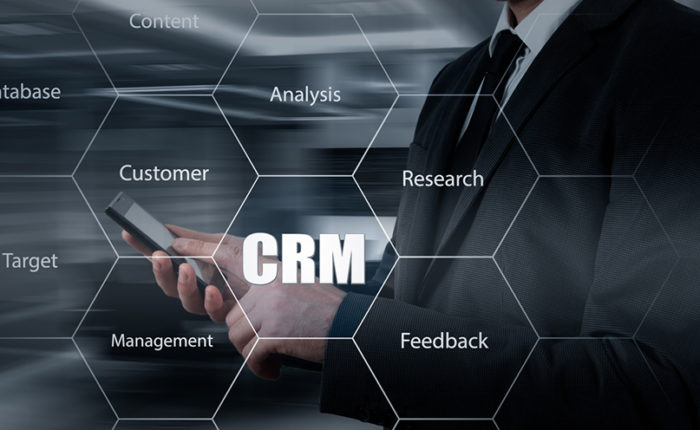While organisations of all shapes and sizes have invested in CRM and continue to understand its importance in managing customer relationships and improving business processes, the efforts to quantify and qualify more precisely the value of CRM and its benefits for small to medium-sized businesses (SMEs) remain undocumented.
In order to provide SMEs with a state-of-the-nation snapshot of what their peers are doing with their CRM, and which benefits they are achieving as a consequence, Maximizer commissioned independent analysis on the experience of its customers in obtaining value and success from their CRM solutions. The result is benchmark data derived from in-depth reviews with more than 300 SME CRM users across the EMEA region (Europe, Middle East and Africa).
As the customer journey becomes more complex, with consumers hopping from one channel to another as they decide whether to make a purchase, businesses are finding that siloed systems to manage customer relationships no longer cut the mustard. Businesses are no longer implementing CRM solutions in isolation, but are establishing them as a hub into which all other systems feed, which means as a result that not only are all functions of a business benefitting from the CRM solution, but they are also being measurably more responsible for their contribution to customer satisfaction and business growth.
Value of CRM: crucial tool, vital intelligence
In fact, employing a CRM solution to track, inform, guide, manage and measure the customer experience allows a business to spot when a prospect or customer might be ‘in buying mode’. CRM solutions also provide a crucial tool to help manage any danger points such as when a customer service failure is undermining the customer experience.
By providing access to customer intelligence for all departments, CRM ensures ROI from customer intelligence is multiplied several times over without disrupting existing operating systems and technology. The first area examined by the Maximizer Benchmark Study was the key business objectives and operating benefits that companies expect their CRM to help achieve.
Just over a third (31%) of SMEs are placing their CRM solution at the very heart of their businesses. They see it as fundamental to driving growth and to improving decision making processes across the company. All departments thus draw on the central customer knowledge hub provided by the CRM solution. These users can be classified as highly ‘mature’ CRM users.
However, the majority of SMEs, according to the benchmark study, have not yet reached this level of maturity in deploying their CRM solutions and most are still focused on improving process efficiency as 84% cited this as a critical business objective for CRM. They report that they are gaining measurable process efficiency and productivity from their CRM, even though they have not yet applied its full potential for guiding strategy.
Five operating benefits enhance value of CRM:
The Maximizer study also asked respondents which operating benefits were being measurably gained from their CRM solution and found that five key benefits result from successful CRM implementation, these are:
- Centralisation of customer data (87%)
- Improved data quality and value (70%)
- Improved visibility of communications and activities (60%)
- Improved customer segmentation (52%)
- Increased productivity with reduced manual admin (29%)
Specifically, the centralisation of customer data is a key building block for CRM especially if it is to be deployed throughout the organisation. If all departments such as sales, marketing, customer service, operations, product development, finance are working from the same data then they all have access to customer intelligence especially when implemented through a ‘cloud’ deployment to enable remote access.
Data quality needs to be up to scratch for information to be useful. Inaccuracy is usually the result of disparate and fragmented databases not being shared between functions of the business, so having a single repository can help avoid this scenario. Similarly, having full immediate visibility of all customer interactions helps identify points of customer experience failure before they cause too much damage to the customer relationship.
Management, therefore, has access to near-real-time information and analysis and has a transparent view of success and failure points in every part of the business, helping improve customer experience, business management and strategy.
CRM solutions are enabling greater business efficiency by helping identify bottlenecks, refine existing business processes, automate routine tasks and improve prioritisation in staff tasks. The gains can be considerable, including more responsive customer service, better use of salespeople’s time, closer measurement of product development cycles and marketing campaigns. The efficiency element is also evident at a more senior level through the use of automated reporting and dashboards.
Far too often, SME businesses make the mistake of thinking that segmentation is only of concern to marketing. In reality, businesses need to accurately profile their customers: how they behave, how much attention and resource they consume, in order to predict the revenue and profit they generate. Segmentation allows resources to be applied to each client in accordance with their real value to the business. This in turn helps reduce unfruitful spend on marketing from targeting customers who are unlikely to be interested in the offer and on product development spend from engaging with customers who do not fit the company’s future growth profile, for example.
Maximizer has collected the views of SMEs and published the key findings in its Benchmark Study to fill the information gap on measuring value and success from CRM solution deployment.
SMEs and autonomous departments of larger enterprises now have a tool to help them clearly understand how their peers are deploying CRM, what objectives they are setting for their CRM investment and what main benefits they are gaining and measuring.
The full Benchmark Study is available for download, here.
Read also:
Rewards and incentives: are they enticing the modern savvy shopper?
